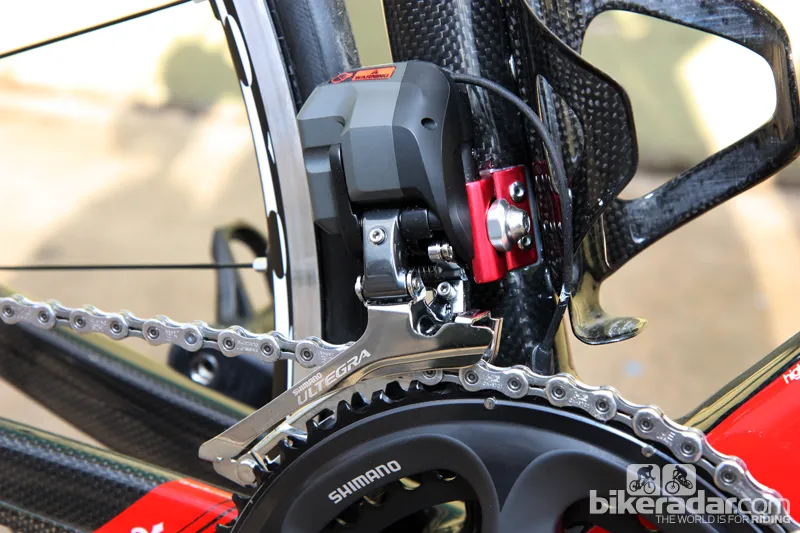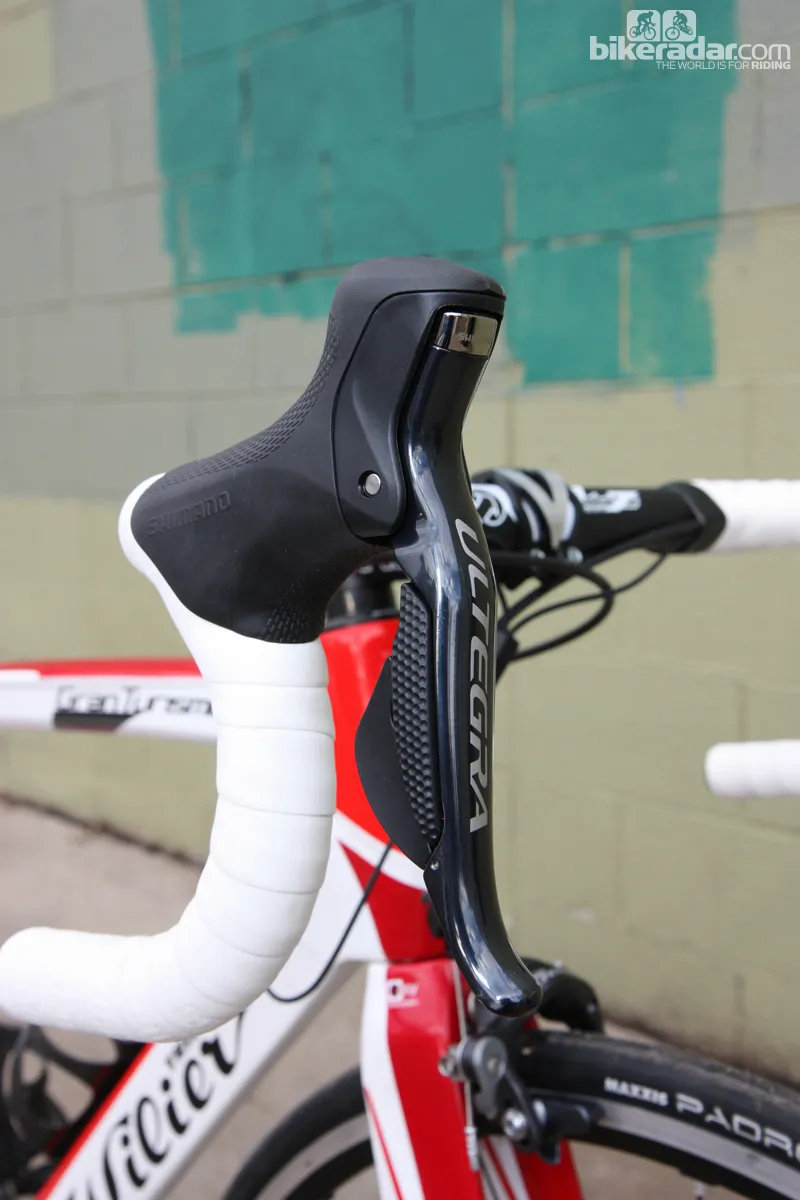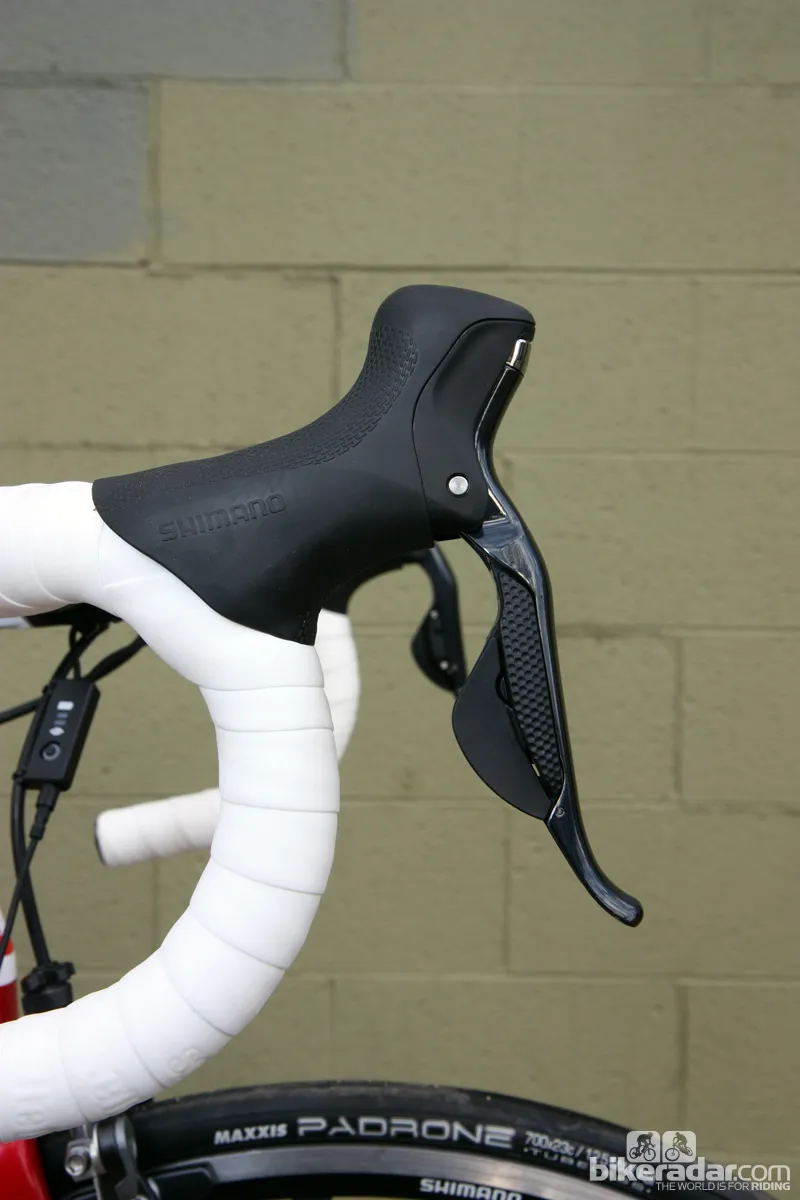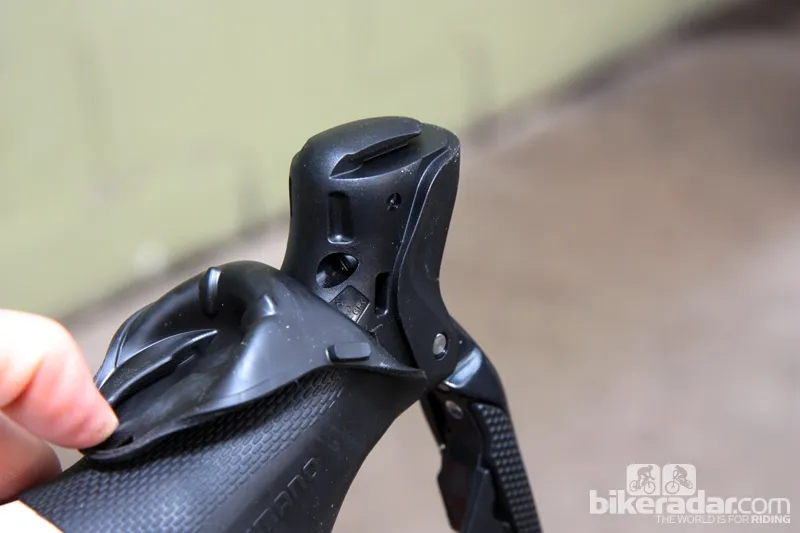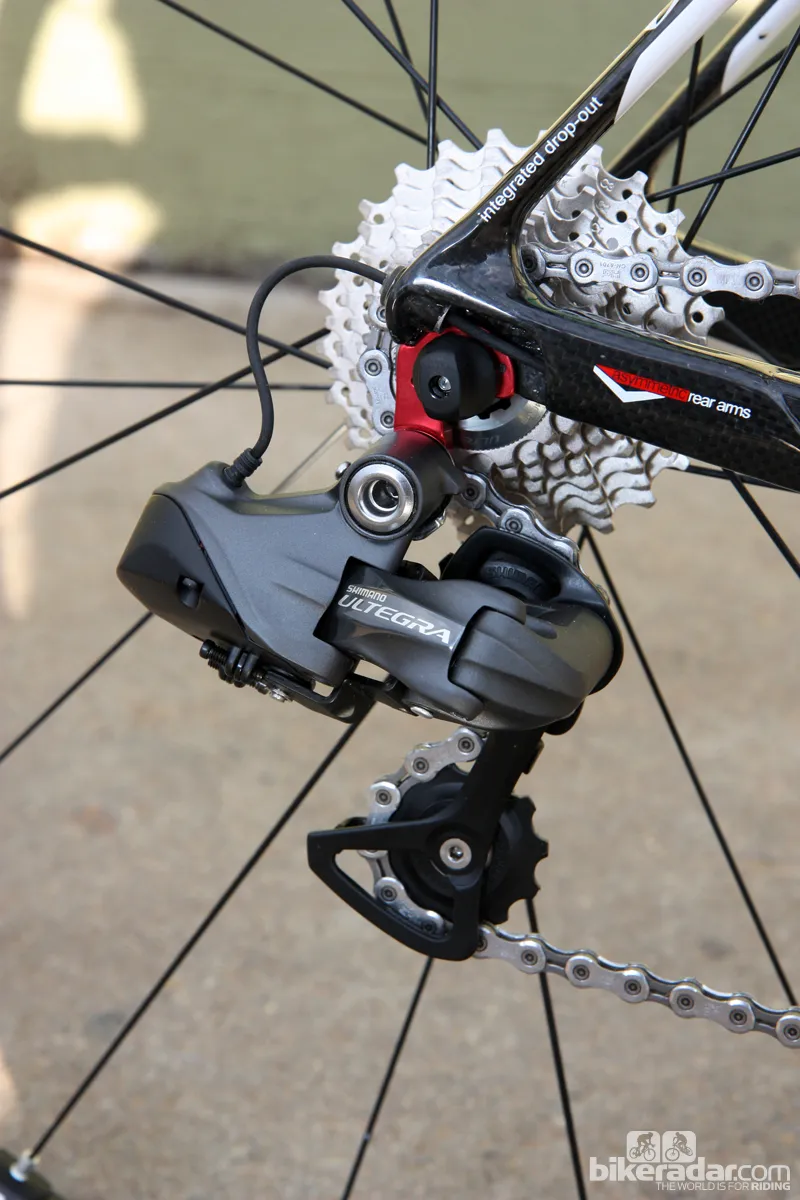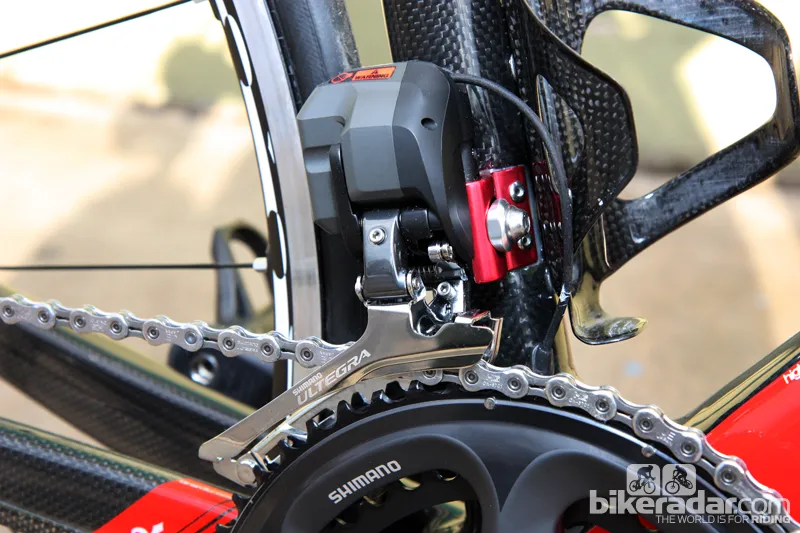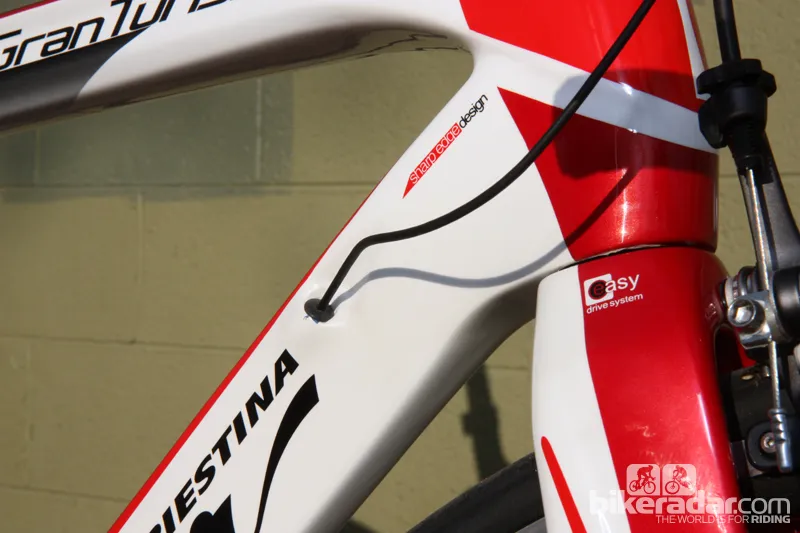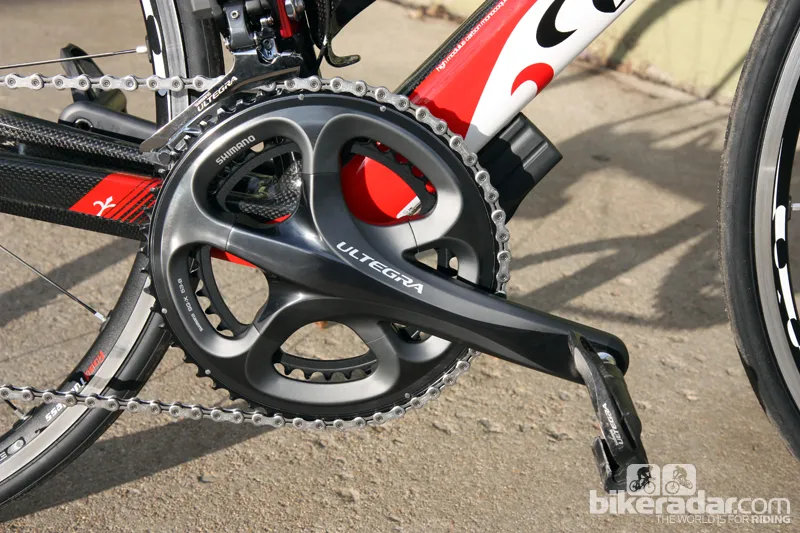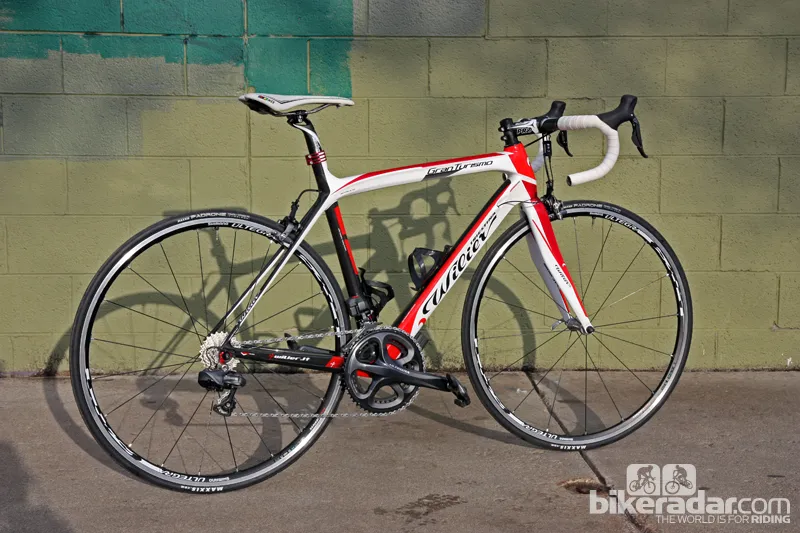Skeptics will still scoff but for those who've actually had the privilege of trying it first-hand, Shimano's electronic shifting has proven a performance – and maintenance – boon. The introduction of a second-tier Ultegra 6770 Di2 version has now brought the costs closer to what mere mortals can afford. Weight weenies will want to pass, but now that we've been on it for several months, we can confidently say that Di2-curious buyers who've been waiting for prices to fall can now consider their ship to be docked at the harbor.
Truly Dura-Ace-like shift performance
Swap between a Dura-Ace Di2 bike and an Ultegra Di2 bike blindfolded and there's no performance distinction between the two. Rear shifts are again remarkably smooth, quiet and precise – and substantially quicker than Shimano's mechanical groups if you factor in lever travel. Front shifts are simply awe-inspiring on account of the powerful front derailleur motor, the clever stepped movement, and the ultra-stiff crankarm and chainring design.
Whether climbing full-power out of the saddle, cross-chained, full sprint, whatever – just push the button and the chain magically climbs on to the big ring or is smoothly guided on to the inner ring absolutely perfectly, each and every time. It's almost laughably brilliant in execution and still the best in the industry – mechanical or electronic.
Shimano ultegra di2 in action
Video: Shimano Ultegra Di2 in action
Save for the telltale whir of the front derailleur motor (which we actually like) and the more muted buzz from the rear (which you can barely hear even on the workstand), the drivetrain is also whisper quiet. Part of this is due to Shimano's typically hyper-engineered chain, chainring and cog shaping but the auto-trimming front derailleur cage deserves credit as well.
Rather than alter the cage shape to eliminate rub in all gear combinations, Shimano have instead chosen to stick with a narrower cage for optimized shift performance and carried over the same auto-trim feature from Dura-Ace to Ultegra. Proper setup is key – and admittedly, we didn't get it quite right at first – but once it's dialed in, there's no need to fiddle with it again and it's utterly faultless, at least provided you're using standard chainring pairings.
We've heard some accounts from 'cross pros that the system doesn't accommodate more mud-friendly combinations but on our standard 53/39-tooth setup, we couldn't ask for more. Just ride in whatever gear combination strikes your fancy and let the system brain figure out the rest.
Lever ergonomics are wholly carried over from Dura-Ace Di2, with the same trimmed-down and smoothly contoured shape we've come to appreciate. As compared to Shimano's current mechanical levers, Ultegra Di2 feels more natural and easier to grip, with fewer hard edges. Smaller handed riders will have an easier time with the reduced girth, too, and if lever reach is an issue, it's again adjustable from beneath the hood, with no ugly gap as on mechanical Dura-Ace.
We haven't had to do even a little bit of maintenance once we had the system dialed in – in fact, this is one of the best aspects of Shimano's electronic transmissions. Through wet rides on dirt roads, careless bike washing and even occasional utter neglect, shift performance has remained consistent from day one. Save for a physical change in the system – a bent rear derailleur hanger, for example – there's simply no work required. Buyers who regularly travel with their bikes will also be happy to know that you can detach and reattach wire connections ad nauseum without affecting the adjustment.
Early Di2 detractors invariably pointed to battery life as an Achilles' heel but after several months on the Ultegra setup – and now two years on Dura-Ace – it simply isn't an issue unless you're also the type to neglect lubing your chain for months on end. Shimano use the same battery as Dura-Ace here so not surprisingly, battery life has proven roughly comparable, which is to say it's inordinately generous. Most users will charge the system perhaps two or three times per season and there's ample warning when the battery power is getting low.
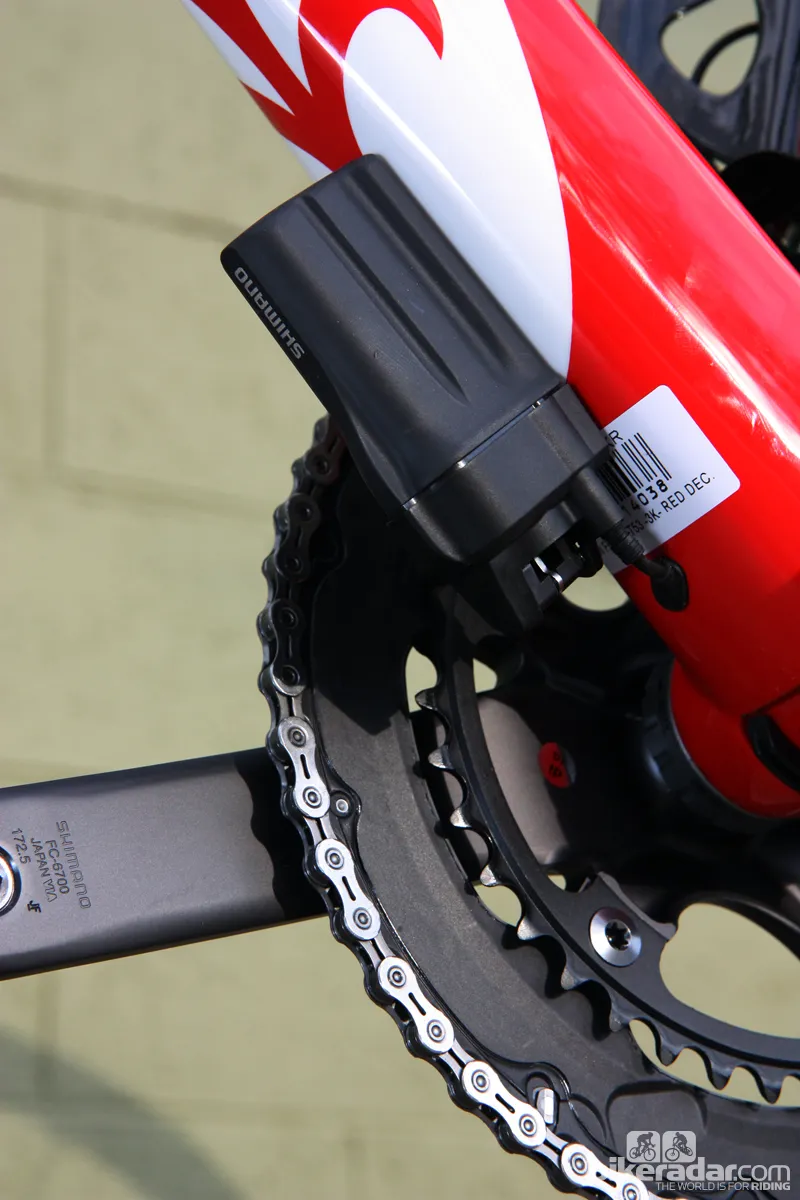
Shimano's Ultegra Di2 group uses the exact same battery as Dura-Ace Di2 – and it's similarly generous in terms of charge capacity
Even better than Dura-Ace in some ways, too…
Ultegra Di2's main advantage to Dura-Ace Di2 is, of course, price. At about US$2,300 for a complete group (wiring harness included), it's a full $1,000 cheaper – not exactly pocket change in anyone's book. True, that's still far from cheap but it's not far off from the disappointingly mediocre mechanical Dura-Ace group while offering vastly superior performance in our opinion in terms of lever ergonomics, front and rear shift quality, and long-term stability.
Setting up the original Dura-Ace Di2 wiring harness wasn't a huge challenge but Shimano have made significant improvements with this latest go-around. All of the components merely have to connect to each other through the junction box (which is our case, was tucked away neatly inside the down tube of our Wilier Triestina Gran Turismo loaner frame).
We were initially perplexed during the build process as none of the four box ports was labeled but then we realized that it simply doesn't matter what you plug into where. We even tried multiple combinations to verify – just slap everything together and the system's brain figures out the rest. The connectors and wires are smaller than before, for a slightly less visually bulky arrangement.
Shops benefit from the more modular arrangement, too. Each of the wires is available in multiple lengths and they're cheaper and easier to have on hand than complete Dura-Ace Di2 wiring kits, plus it makes for more flexibility if you're tackling a particularly challenging custom setup. The new wires aren't compatible with the original Di2 components, however, though we anticipate Shimano will settle on this newer format for all newer Di2 groups.
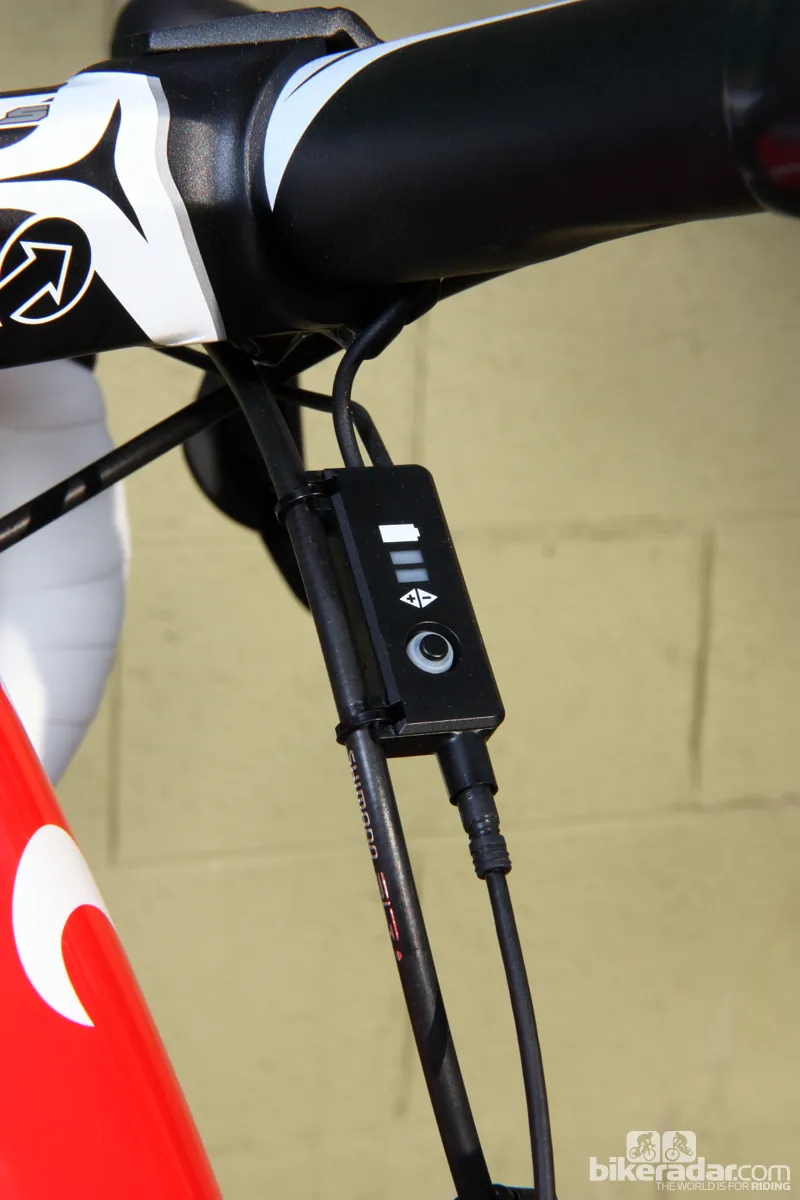
This little box and its two LEDs serve as both the battery charge indicator and the switch between ride and setup modes
… but not in all ways
Shimano have to differentiate Ultegra Di2 from its bigger brother in some way to justify the 30 percent price drop, and one big change is weight. At about 2,680g for a complete group, Ultegra Di2 is roughly 440g heavier than Dura-Ace Di2 – almost exactly a pound in imperial units, which is a significant chunk of bulk considering the typically weight-conscious road market.
On the plus side, it's still lighter than a 105 mechanical group, but only by a modest 200g or so and after factoring in the rest of the non-Di2 components such as the brake calipers and crankset, which contribute most of the loss. In fact, if you compare apples to apples and only look at the transmission bits, it's pretty much a wash.
It's also impossible to overlook the bulk of Ultegra Di2's front and rear derailleurs. Dura-Ace Di2 takes enough heat as it is for its somewhat bulbous appearance and the Ultegra ones are much, much bigger. That bulk is slightly more cleverly hidden on the front derailleur but the added appendage on the rear mech is just enormous. Functional? Yes. Pretty? Well, as always that's in the eye of the beholder but then there's that other saying about faces and mothers…
Bulkiness aside, fit and finish quality on the Ultegra Di2 bits are superb, with highly polished surfaces and consistent dark grey anodized hues throughout. The aluminum brake lever blades might disappoint some potential buyers but they're so impressively slim and sleek – not to mention nearly as black – that we never gave them a second thought.
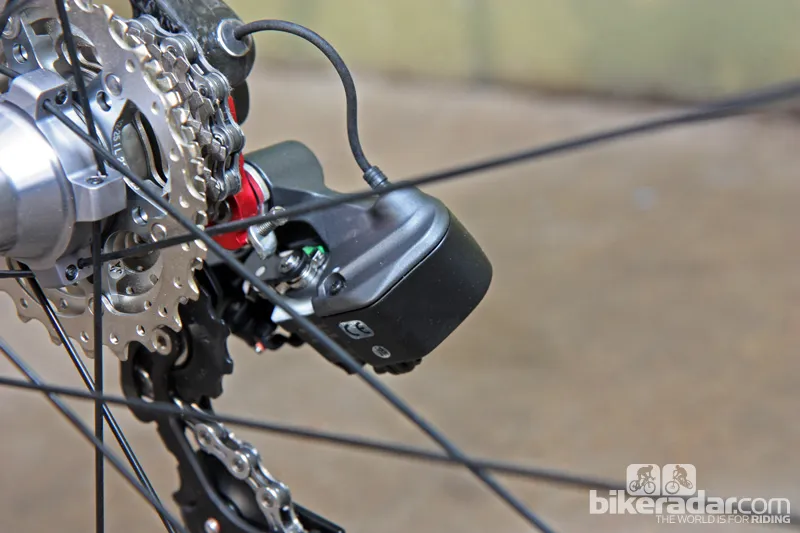
While admirable in terms of function, the UDi2 derailleurs are unmistakably bulky
Unfortunately, Shimano haven't addressed our main complaints about Dura-Ace Di2 – namely, the nearly complete lack of tactile feedback from the shift buttons and the somewhat clumsy method by which you shift multiple gears. In contrast to Shimano's superb mountain bike trigger shifters, which are built around a softly sprung shift lever but a stiffly sprung ratchet tooth for light effort but a firm click, the Ultegra Di2 buttons almost reverse that setup.
The larger button in particular is curiously hard to push but both buttons offer up almost no tactile or audible signal that you've activated the switch – and rear shifts can be so smooth that your only sign is a change in cadence. We'd like to see that mountain bike feel replicated on Di2, along with the multiple shift capability. We're not sure Campagnolo's method is best, either, but some sort of two-step electrical switch analogous to Shimano's Multi-Shift feature on the mountain bike triggers seems like a prime option to us.
Shimano engineers have carried over the differential surface textures of the buttons to combat misshifts but they've fallen short there as well. While the differences are noticeable visually, they're much subtler where it counts – on your fingertips – and you can forget about it completely when wearing full-finger gloves. We applied a bit of grip tape to the rearmost paddles on our test set, which helped significantly.
Finally, we'd still like to see Shimano extend the button surfaces lower down on the lever for easier shifting from the drops. In all fairness, it's not difficult to crane your index finger upward a bit – and you can use your first knuckle for rear upshifts – but all the same, we'd prefer not to.
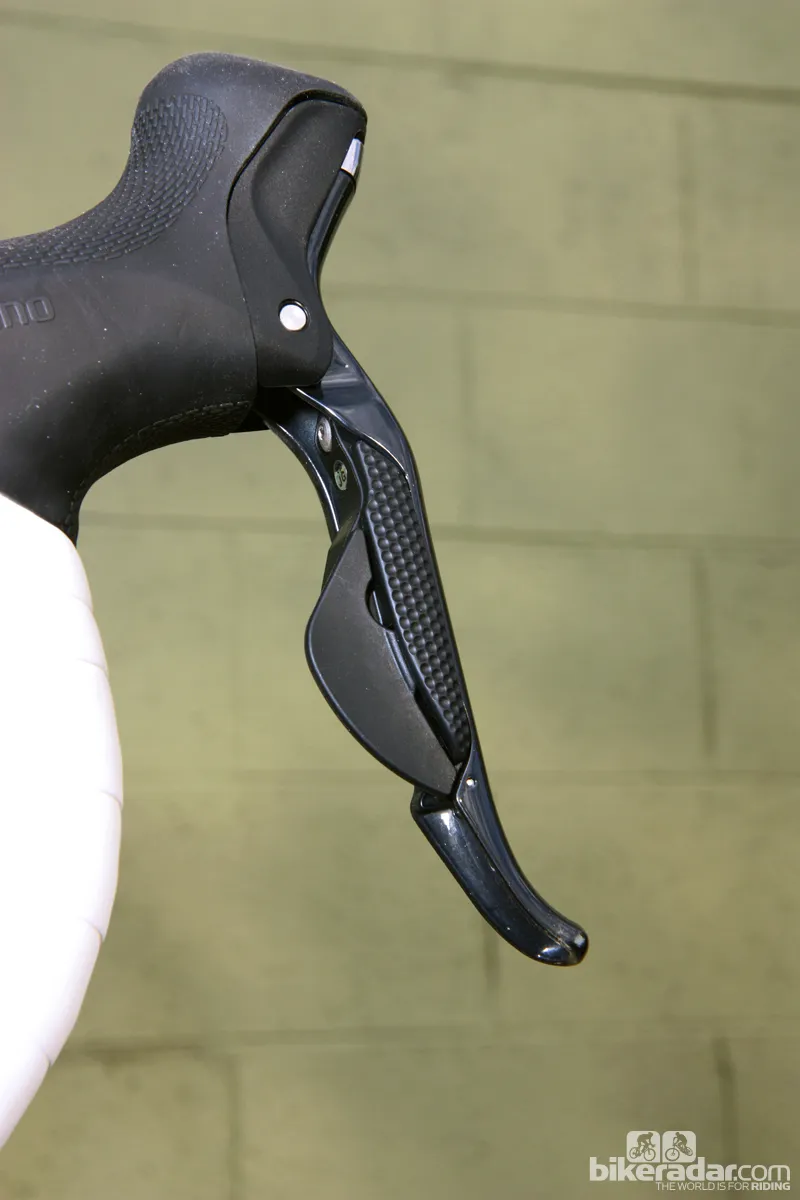
Shift lever buttons are carried over from Dura-Ace Di2. We'd have preferred to have a bit more of a texture difference between the two sets of buttons and a stronger click
Electronic shifting for the masses (sort of)
That Shimano have managed to replicate the shift performance of Dura-Ace Di2 for the far less expensive Ultegra Di2 is admirable, to say the least. Save for modest downgrades in weight and bulk, it's the epitome of trickle-down technology done right, with the added bonus of one or two improvements, too.
We're disappointed that Shimano didn't stray a little further outside of their notoriously small comfort zone for this newer iteration but in fairness, the system is already pretty darn good and that it can now be had by a far bigger chunk of the buying public is invariably a good thing. Sure, it's probably too heavy for the weight weenie crowd but one could easily make the argument that we're all too weight-obsessed anyway.
Regardless, don't knock Di2 until you've tried it, particularly as users don't generally have much negative to say about it – and given Ultegra Di2's more aggressive price point, we predict that group will be growing substantially. Now, anyone else curious about a 105 version?
Price: US$2,288 / £1,605.86 (complete Shimano Ultegra Di2 group); $1,600 / £1,124.92 (Shimano Ultegra Di2 transmission components only)
Weights:
Dual Control levers, ST-6770 (pair, w/o cables and housing)
315g
Rear derailleur, RD-6770
271g
Front derailleur, FD-6770 (braze-on)
167g
Battery, SM-BPR1
69g
Wiring kit, complete
80g
Charger, SM-BCR1
Array
